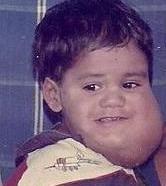Nuchal Bleb, Familial

Description
Fetal cystic hygromas are congenital malformations of the lymphatic system appearing as single or multiloculated fluid-filled cavities, most often in the neck. They are thought to arise from failure of the lymphatic system to communicate with the venous system in the neck. They often progress to hydrops and cause fetal death (Chervenak et al., 1983).
Clinical FeaturesBieber et al. (1979) reported a sibship in which the first and third pregnancies ended in stillborn female infants with a 'bag of water' at the nape of the neck. The mother sought genetic counseling in relation to the fourth pregnancy. Ultrasonography suggested occipital encephalocele, and alpha-1-fetoprotein (AFP; 104150) was greatly elevated. Elective abortion was performed at 21 weeks of gestation. The fetus had a normal 46,XX karyotype and a large nuchal bleb with no evidence of encephalocele. Nuchal bleb in the XO Turner syndrome is also accompanied by elevation of AFP in the amniotic fluid.
Chervenak et al. (1983) studied 15 consecutive cases of nuchal hygroma detected prenatally. None survived. In 11, the karyotype was consistent with the Turner syndrome and another probably had XY gonadal dysgenesis. Three had a 46,XX karyotype and 2 of these had multiple malformations.
Watson et al. (1990) reported a 29-year-old white female who had consecutive pregnancies in which the fetus was found to have cystic hygroma with hydrops. In 2 of the fetuses, a normal karyotype was documented. Dallapiccola et al. (1984) described a similar patient who had 2 consecutive fetuses with cystic hygroma, both with a normal karyotype.
Williams and Josephson (1997) described an Amish family in which 2 brothers had isolated cystic hygroma. A second Amish family had 2 children, a boy and a girl, with congenital chylothorax; both died as a consequence of this condition, one prenatally and one neonatally. The authors stated that familial cystic hygroma not associated with hydrops fetalis and neonatal death had not previously been reported.
By ultrasound examinations, Bruni et al. (1999) detected nuchal cystic hygroma and nonimmune hydrops fetalis (236750) in 2 male sibs. Fetal and parental karyotypes were normal. The parents were consanguineous. The parents elected to terminate the 2 pregnancies. Postmortem examination showed no anomalies other than those detected by ultrasound. Autosomal recessive inheritance of this combination of abnormalities was suggested by the observations.
InheritanceAlthough cystic hygroma is a conspicuous feature of the Turner syndrome and may occur in some mendelian disorders, its occurrence as an isolated autosomal recessive has been suggested by several reports (e.g., Watson et al., 1990 and Williams and Josephson, 1997).
HistoryGobbel et al. (2007) identified 5 human fetuses with severe cystic hygroma in the Meckel anatomic collection at the University of Halle Medical School in Germany. The cases had been described by Meckel the Younger in 1826 and 1 of his students in 1819. The fetuses were between 13 and 17 weeks' gestational age. Radiographic techniques confirmed the diagnoses and comparative genomic hybridization showed normal chromosome number. Gobbel et al. (2007) also provided an historical review of the collection and the work of J. F. Meckel the Younger, who lived from 1781 to 1833.